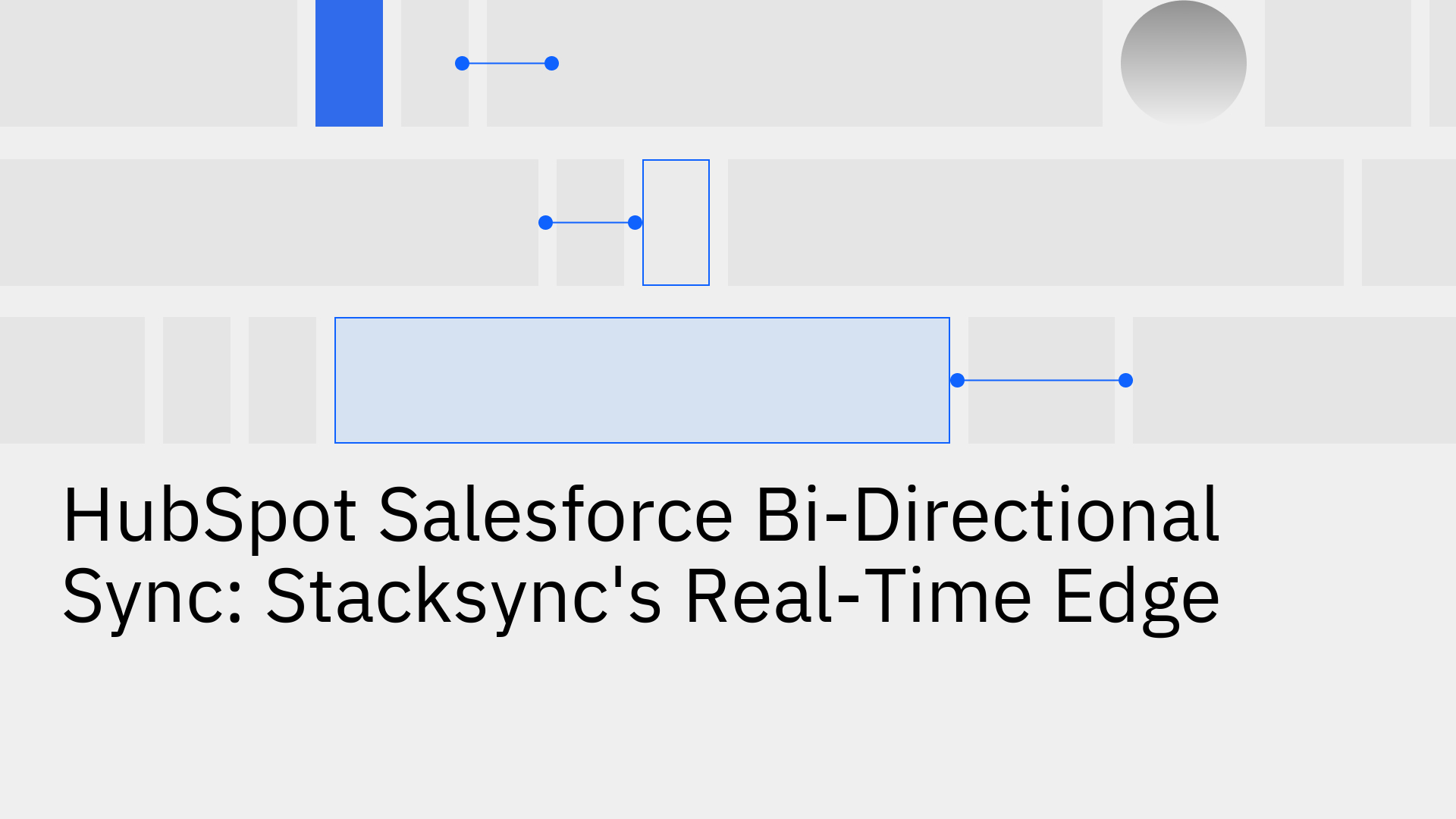
Integrating HubSpot and Salesforce is a critical step for aligning marketing and sales teams. By connecting these two powerhouse platforms, organizations aim to create a seamless flow of information from lead generation to close. However, standard integrations often fall short, plagued by data delays, frustrating sync errors, and operational inefficiencies that create a persistent disconnect between teams. The solution isn't just a connection it's a true, real-time bi-directional sync. Stacksync provides this real-time edge, ensuring data is always accurate and instantly available across both systems.
For modern, data-driven companies, a simple point-to-point connection is no longer sufficient. Even the native HubSpot Salesforce integration has limitations that can disrupt business processes and undermine data integrity [5]. These issues often manifest in three key areas: latency, errors, and scalability.
Many integration tools, including the native connector, rely on batch processing. This means data is synchronized on a schedule every 5, 15, or even 60 minutes. This delay, or latency, has significant negative consequences:
These issues are compounded by challenges like differing naming conventions and property mappings between the two platforms, which can lead to data hygiene problems and sync errors [7].
Worse than delayed data is incorrect data. Sync errors can occur without immediate notification, creating "silent failures" that corrupt your data over time. The consequences include duplicate records, incomplete contact profiles, and a pervasive loss of trust in the data integrity of both CRMs. According to one guide, these common errors often require a structured, iterative process to resolve, demanding significant manual effort and developer time to troubleshoot and reconcile mismatched information [2].
Inefficient integrations make excessive API calls, quickly consuming the daily quotas for both HubSpot and Salesforce. Once you hit your limit, the data flow stops completely until the next day. As your business scales and data volume grows, these limitations become a major operational bottleneck. The native integration, for example, has known constraints that can hinder performance with large datasets or complex sync requirements [6].
Stacksync is an enterprise-grade solution engineered specifically to overcome the limitations of standard connectors. Instead of periodic batch updates, we offer a genuine two-way, real-time sync that transforms revenue operations. This architecture ensures that when a record is updated in one system, the change is propagated to the other almost instantly, creating a single, unified source of truth. With a robust HubSpot two-way sync, your teams can finally operate in perfect alignment.
Stacksync updates records in milliseconds, not minutes. This real-time performance is critical for high-velocity business operations.
Our platform is built to prevent silent sync failures. The Stacksync issue management dashboard provides full visibility into the health of your integration, logging every potential issue and providing alerts. If an error does occur—for example, due to a validation rule in Salesforce—you can retry or revert the sync with a single click, ensuring data consistency without pulling in developers. This makes for an effortless HubSpot database and Salesforce integration.
Stacksync’s smart rate limiting intelligently adapts to traffic, ensuring you never hit your HubSpot or Salesforce API quotas. Our system bundles requests and manages them efficiently to allow for continuous, uninterrupted data flow. The platform is engineered to sync millions of records from day one, scaling effortlessly as your business grows. This powerful Salesforce two-way sync integration removes technical limitations so you can focus on growth.
A major pain point for complex organizations is syncing tailored data models. Stacksync addresses this head-on by providing full support for all standard and custom objects and fields in both HubSpot and Salesforce. Our platform automatically detects your unique schemas and maps them, ensuring that your customized business processes are perfectly reflected across both systems without compromise.
While the native connector is a good starting point, businesses that rely on real-time data require a more robust solution. A proper integration always requires careful planning to align data models and business rules [3]. The right tool makes all the difference.
A successful HubSpot-Salesforce integration hinges on the quality and reliability of the sync. For businesses that cannot afford data lag, sync errors, or scalability roadblocks, Stacksync is the definitive solution. By enabling a true, real-time bi-directional sync, we help you align your teams, establish a single source of truth, improve operational efficiency, and accelerate revenue growth.
To learn more, explore our complete guide on HubSpot and Salesforce sync.
See the difference for yourself. Book a Demo Start a Free Trial